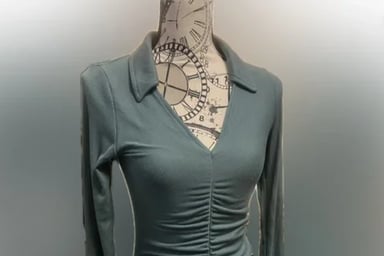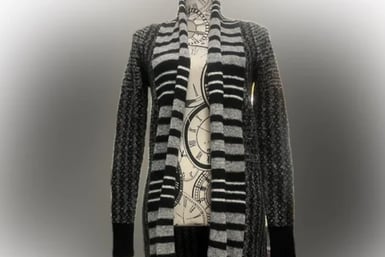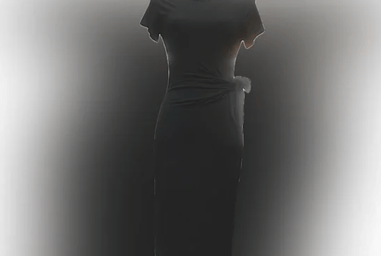The Ultimate Guide to Different Types of Clothes Hangers and Their Best Uses



Overview of Different Types of Clothes Hangers
Clothes hangers are essential tools for organizing wardrobes and ensuring garments are kept in good condition. Each type of hanger offers unique features that cater to different clothing items and storage needs. Understanding the variety available can help in making more informed choices. Here, we provide a comprehensive overview of the most common types of clothes hangers and their best uses.
Standard Plastic Hangers: This type of hanger is ubiquitous in households due to its affordability and versatility. Made from plastic, these hangers are lightweight and come in various colors. They are suitable for everyday wear such as T-shirts, blouses, and light dresses. However, they can sometimes lack the durability needed for heavier garments.
Wooden Hangers: Wooden hangers are prized for their strength and aesthetic appeal. Crafted from materials such as cedar or maple, they offer a sturdy support for heavier garments like jackets, coats, and suits. The natural durability of wood helps maintain the shape of the garments, preventing stretching and sagging.
Wire Hangers: Typically found in commercial settings like dry cleaners, wire hangers are made from thin, flexible metal. While they are inexpensive and space-saving, they lack the support needed for delicate or heavy garments. Wire hangers are best used for short-term storage or for items that are not prone to damage.
Padded Hangers: Designed with a soft, cushioned exterior, padded hangers are ideal for delicate fabrics, including silk, satin, and fine knits. The padding helps to prevent creases and wrinkles, maintaining the integrity of the garment's shape. They are a favorite among those storing wedding dresses or evening gowns.
Specialized Hangers: These hangers cater to specific types of clothing. Pant hangers come with clips or bars designed to hold trousers without causing creases. Skirt hangers are similar, featuring adjustable clips to secure skirts at the waistband. Coat hangers are typically broader and sturdier, providing the necessary support for heavy outerwear and preventing shoulder dimpling.
By understanding the unique characteristics of each type of clothes hanger, it's easier to select the most appropriate option to maintain the quality and appearance of your garments. Using the right hanger for each clothing type not only keeps your wardrobe organized but also extends the life of your clothes.
Choosing the Best Type of Clothes Hangers: Pros and Cons
When it comes to choosing the right hangers for your wardrobe, understanding the pros and cons of each type can significantly influence your decision. The aim is to select hangers that suit your specific needs, whether it's for everyday use, long-term storage, or to cater to specific garments.
Wooden Hangers: Wooden hangers stand out for their strength and durability. Ideal for heavy garments like coats and suits, they offer excellent support and prevent clothing from losing shape. Their aesthetic appeal adds a touch of elegance to any closet. However, they are more expensive than other types and can take up more space, making them less suitable for small closets.
Plastic Hangers: Cost-effective and versatile, plastic hangers are suitable for a variety of clothing items. They come in different colors and styles, which can help organize your closet. While they are lightweight and practical, they may not withstand the weight of heavier garments and are prone to breaking. Over time, they might also leave marks on delicate fabrics.
Wire Hangers: Often found in dry cleaners, wire hangers are inexpensive and slim, making them space-saving. They are, however, not recommended for long-term use as they can rust and leave stains on clothes. Additionally, their thin structure may lead to misshaping garments over time, making them less ideal for delicate fabrics and heavy clothing.
Velvet Hangers: Velvet hangers provide a non-slip surface, making them perfect for delicate items like silk blouses and dresses. They are sleek and space-saving, which is advantageous for small closets. However, they can be less durable compared to wooden or plastic hangers and may shed their velvet coating over time, affecting their lifespan and aesthetic appeal.
Padded Hangers: Designed to protect delicate and high-value garments, padded hangers prevent indentations and wrinkles, making them perfect for lingerie, knits, and fine fabrics. Their cushioned design enhances the aesthetic appeal of your closet. On the downside, they are more costly and bulkier, which means they require more space and investment.
In considering these pros and cons, it becomes easier to tailor your hanger choices to your wardrobe requirements. Prioritize your needs, whether they be for durability, elegance, cost-effectiveness, or space efficiency.
What to Hang on Each Type of Clothes Hanger: Practical Tips
Understanding the optimal use of different types of clothes hangers is crucial for maintaining the longevity and integrity of your garments. By selecting the right hanger for each type of clothing, you can significantly reduce wear and tear, preserving both the appearance and structure of your wardrobe. Here, we will explore practical tips for what types of clothes should be hung on each specific type of hanger to achieve efficient organization and care.
Padded Hangers: Delicate fabrics such as silk, satin, and lace are best hung on padded hangers. The soft padding prevents any snagging or stretching, ensuring that these fragile materials retain their shape and appearance. Padded hangers are especially suitable for dresses and blouses, offering the necessary support without causing damage.
Wooden Hangers: For heavier garments like suits, jackets, and heavy coats, wooden hangers are the optimal choice. Their robust structure provides the needed support to maintain the form and silhouette of these clothing items. Additionally, wooden hangers are less likely to bend under the weight of these heavier materials, making them a durable and long-lasting option.
Clip Hangers: Skirts and pants are ideally hung on clip hangers, which feature adjustable clips that securely hold the garments in place. This type of hanger prevents wrinkles and creases that can occur when skirts and pants are folded or draped over standard hangers. The clips also allow for easy access and visibility in your closet, making it simpler to coordinate outfits.
Plastic Hangers: Everyday items such as t-shirts, blouses, and lightweight sweaters can be efficiently hung on plastic hangers. These hangers are lightweight yet sturdy enough to support regular wear-and-tear items without compromising their shape. They are also a cost-effective solution for those who require a large number of hangers for assorted clothing pieces.
Velvet Hangers: To prevent slippage, velvet hangers are an excellent choice for garments with wide necklines or delicate straps. The non-slip surface ensures that even the most slippery fabrics stay securely in place, while the slim design allows you to maximize closet space. Velvet hangers are perfect for camisoles, dresses, and any other items prone to sliding off traditional hangers.
By carefully selecting the appropriate hanger for each type of clothing, you can ensure that your wardrobe remains organized and your garments retain their quality over time. Implementing these practical tips will help streamline your closet management, preserving the integrity and longevity of your clothing collection.






